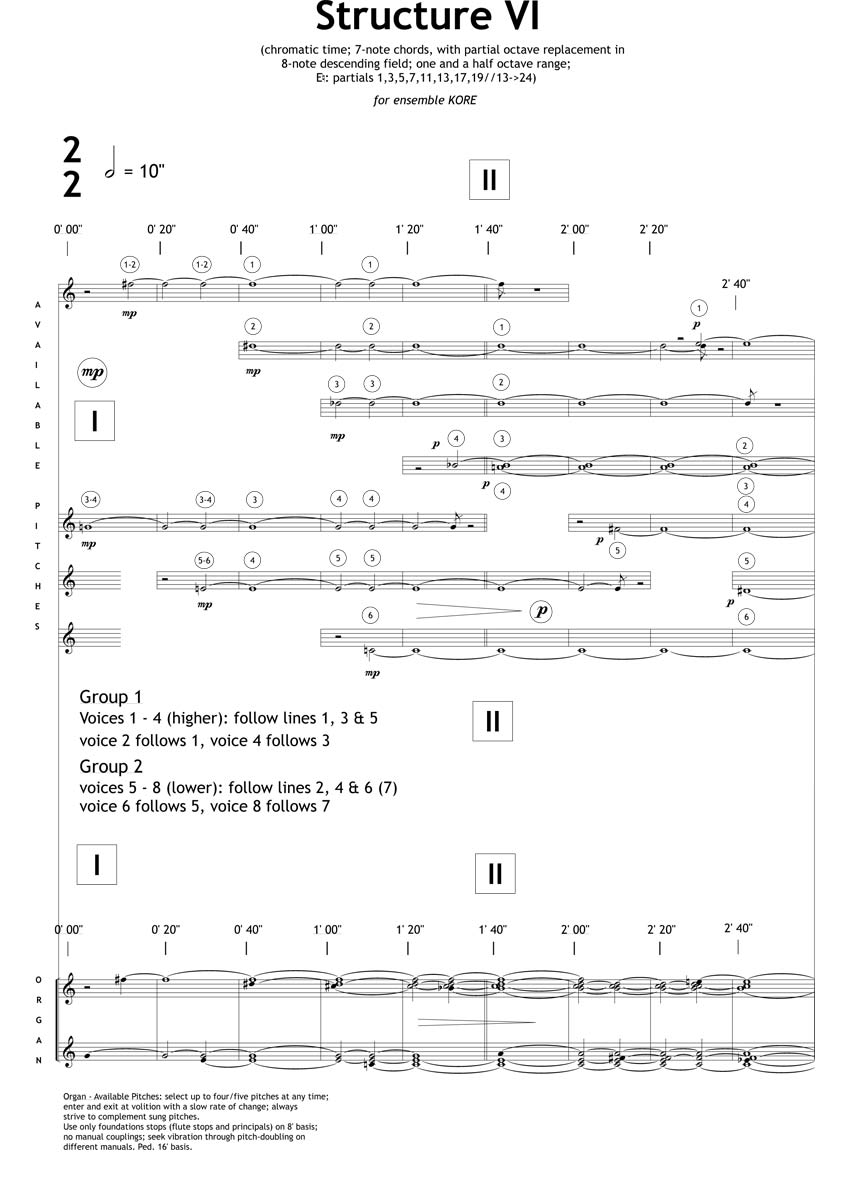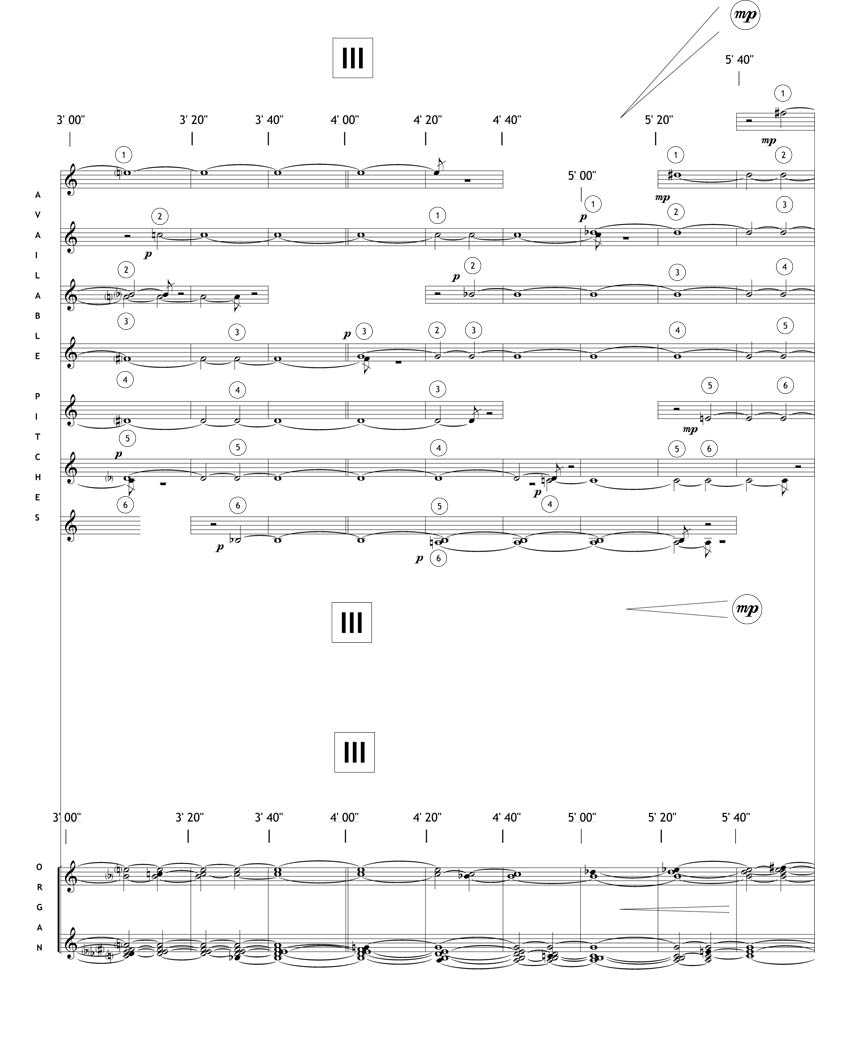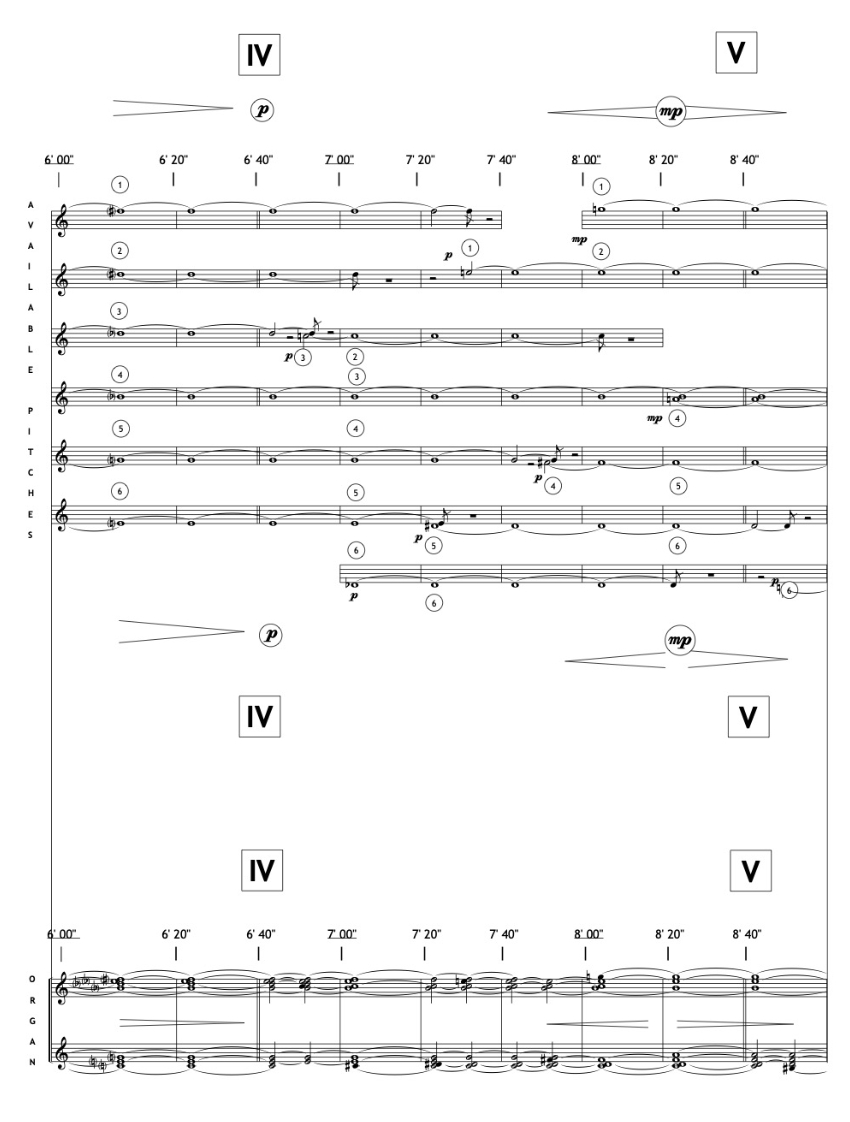No. 27b Structure VIb (2005)
Version for female voices, organ and male drone
Commissioned by: Asko Kamerkoor with financial support from the Netherlands Fund for the Performing Arts
First Performance:
Structure VIb: Asko Kamerkoor, May 10 2009, Arminiuskerk, Rotterdam
Instrumentation: female voices, organ & male drone
Duration: 13’40
Special Features: Performance requires stopwatch monitor on stage and optional live-delay
Info/Program note:
Structure VIb is part of an app. six-hour-long series of works, written in 2005, which deal with ideas of infinity and variable color-change. The series is subdivided into five size- and topic-related sets, which can be performed individually or within a sequence. The works can be played by any set-up ranging from small chamber ensembles to large orchestras, with or without live-delay. The music is notated according to the so-called technique of ‘available pitches’: a technique in which a gamut of pitches is notated within time-segments and the musicians are left free to choose both pitch as well as entry. The performers all play from the score, following a set of General performance instructions and a specified mapping-scheme customized to each particular occasion (for examples of playing instructions and Mapping (line-division) see popup menu above).
The musicians all have one primary sound source (basically, straight tones), but can alternate this periodically with a second sound source or dynamic curve. In an attempt to create a perception of time, which is both timeless as well as tangible, each interval is linked to a set time-length (mostly based on multiplications of a minor second, but sometimes itself variable too) so that the distance of each traversed interval finds a natural correspondence in the time necessary to overlap it. Together with the flexibility of the individual entries this helps create an environment in which formal rigidity and personal freedom can co-exist and sound itself serve as the main protagonist.
One of the non-musical inspirations for the series was based on a paper by Roger Penrose, written in 1965 in which he uses topological ideas to describe how a very massive object can collapse to a point, virtually get crushed under its own weight. When this happens, the outcome is a Black Hole. Penrose proved that there lies a point like no other at the very center of a Black Hole. This point is a space-time singularity. Here, the curvature is infinite and time ceases to exist. To an imaginary observer anybody falling into a black hole would seem to be freezing on the surface for ever and would never be aware of this state of being. This image of freezing and timelessness seemed appropriate to the nature of these pieces as well, which in their own way pursue a similar state of motion and motionlessness.



